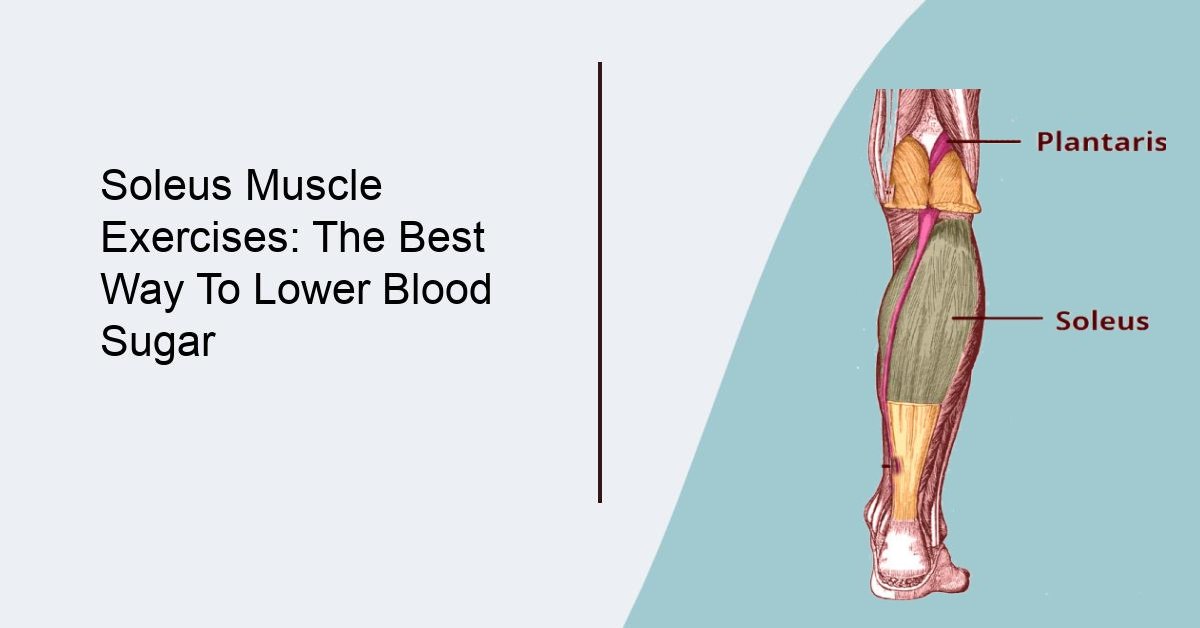The soleus muscle is a powerful muscle located in the back of the lower leg, just beneath the calf muscles. It is responsible for maintaining posture, balance, and stability during physical activities such as standing and walking. Recent studies have found that exercises that specifically target the soleus muscle can be highly effective in reducing blood sugar levels in people with diabetes.
In this article, we will explore the role of the soleus muscle in blood sugar regulation, the benefits of soleus muscle exercises, and some examples of soleus muscle exercises that can help lower blood sugar.
Role of the Soleus Muscle in Blood Sugar Regulation
The soleus muscle is an important regulator of blood sugar levels because it contains a high concentration of glucose transporters, which are responsible for transporting glucose from the bloodstream into the muscle cells where it can be used for energy. In people with diabetes, this process is impaired, resulting in elevated blood sugar levels.
Studies have found that exercises that specifically target the soleus muscle can help improve glucose uptake and utilization, leading to lower blood sugar levels [1]. This is because exercises that target the soleus muscle stimulate the release of a hormone called insulin-like growth factor-1 (IGF-1), which is essential for glucose uptake and utilization in the muscle cells.
What is Soleus Muscle?
The soleus muscle is a powerful and flat muscle located in the back of the lower leg, just below the gastrocnemius muscle. It originates from the top part of the tibia and fibula bones, and extends down to attach to the Achilles tendon.
This muscle is responsible for plantar flexion of the foot, which means it is involved in pointing the toes downward, as well as in maintaining posture and balance when standing or walking.
Unlike the gastrocnemius muscle, which is primarily used for explosive activities such as jumping and sprinting, the soleus muscle is used more for sustained activities such as standing or walking long distances.
Benefits of Soleus Muscle Exercises
Soleus muscle exercises can provide several benefits for people with diabetes, including:
- Lower Blood Sugar Levels: As mentioned earlier, soleus muscle exercises can help improve glucose uptake and utilization, leading to lower blood sugar levels.
- Improved Insulin Sensitivity: Regular soleus muscle exercises can improve insulin sensitivity, which means that the body can use insulin more effectively to regulate blood sugar levels.
- Improved Cardiovascular Health: Soleus muscle exercises can improve cardiovascular health by increasing blood flow and reducing the risk of cardiovascular diseases.
- Improved Muscle Strength and Balance: Soleus muscle exercises can improve muscle strength and balance, which is important for overall physical health and reducing the risk of falls and injuries.
Soleus Muscle Exercises
Here are some easy soleus muscle exercises that can help lower blood sugar levels:
- Standing Calf Raises: Stand with your feet shoulder-width apart, with your toes pointing forward. Slowly raise your heels off the ground and hold for a few seconds before lowering your heels back down. Repeat for several reps.
- Seated Calf Raises: Sit on a chair with your feet flat on the ground. Slowly raise your heels off the ground and hold for a few seconds before lowering your heels back down. Repeat for several reps.
- Wall Sit: Stand with your back against a wall and your feet shoulder-width apart. Slowly slide down the wall until your knees are bent at a 90-degree angle. Hold for a few seconds before slowly sliding back up the wall. Repeat for several reps.
- Jumping Jacks: Stand with your feet together and your arms by your sides. Jump your feet apart while raising your arms above your head. Jump back to the starting position and repeat for several reps.
- Lunges: Stand with your feet shoulder-width apart and take a step forward with your right foot. Bend your right knee until your thigh is parallel to the ground, then push back up to the starting position. Repeat with your left foot.
Summary
In summary, soleus muscle exercises can be highly effective in reducing blood sugar levels in people with diabetes. These exercises improve glucose uptake and utilization, leading to better blood sugar control, improved insulin sensitivity, and other health benefits. Incorporating soleus muscle exercises into your exercise routine can help improve your overall physical health and reduce the risk of complications associated with diabetes. As always, consult with your healthcare provider before starting any new exercise program.
